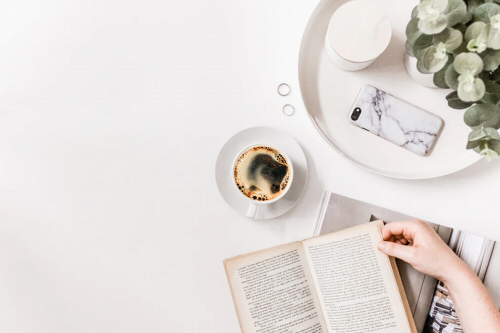‘Do We Want to Build Generational Wealth? Or Do We Want Another Thing’ Asks ‘Afrominimalist’s Guide to Living with Less’ Author
Lauren Shamo
Lifestyle strategist and former lawyer Christine Platt, now known as The Afrominimalist, has made a career out of teaching people how to be mindful consumers. She has even written a book, “The Afrominimalist’s Guide to Living with Less.”
Her journey started accidentally, when she confronted her spending habits during a closet cleanout. “Before I was an Afrominimalist, I was probably the Afromaximalist,” says Platt, now 45. “I had a serious problem.”
Like many people, Platt was always tempted by a sale or bargain, and “emotional spending” helped counterbalance the stresses of being a young professional in big law. “I just accumulated so much stuff,” Platt says.
When she caught herself thinking, “We should probably get more bins,” a light bulb went off. “It was like, Are you really about to buy more stuff, to hide the stuff to store the stuff?” she recalls.
That was the moment she decided she wanted to embrace a minimalist lifestyle. And now she helps others make the shift as well.
Minimalism and mindfulness, Platt says, can help you find the root causes of overspending and lead to better spending choices. Ask yourself, “Do we want to build generational wealth?” she suggests. “Or do we want another thing that we don’t really need, use and love?”
‘Get to the root causes’ of your spending habits
There’s plenty of evidence that Americans struggle with spending: After record-setting debt reduction early in the pandemic, cardholders took on $87.3 billion in new credit card debt during 2021, according to WalletHub.
What’s more, half of working Americans are living paycheck to paycheck, including 31% of those making $100,000 or more, according to a recent MagnifyMoney survey. When a person lives paycheck to paycheck, expenses consume most of their salary, leaving little to no spare cash for saving or investing.
Platt’s method starts by putting a magnifying glass not only on your own spending habits, but also your parents’ and grandparents’.
“I think it’s really important that we do that in our work, and really get to the root causes of not only what happened in our childhood and our cultural expectations and societal expectations, but what are some of the choices that we make daily, that have led to our overconsumption,” she says.
“For me, a large part of my consumption was rooted and conspicuous consumption and trying to keep up with the Joneses,” Platt says. “So I really had to forgive myself. Because there were a lot of emotions that, you know, just bubbled to the surface.”

Identify which values still apply to your life
From there, you can start peeling away what values are still applicable to “your authentic self,” Platt says. “What are your core values and goals, as opposed to what society is telling you or what your friends and family are telling you?”
Identifying these goals, values, and beliefs can help you sort out what you have in your home and even in your life that aren’t useful anymore. That can also help you identify what aspects of minimalism you want to embrace in your life.
“I always say, even with minimalism, minimalism your way,” says Platt. “For me, it ended up being Afrominimalism: A minimalist life influenced by an African diaspora, because those are the part of my core values and goals: Preserving, honoring, celebrating the history and beauty of the African diaspora.”
Find a way that a minimalist lifestyle can work for or makes sense for you. “I love Marie Kondo, I KonMari my closet all the time, but I don’t fold,” Platt says. “The folding technique just doesn’t work for me! And that’s okay, right? I can take other bits and pieces of her work and philosophy, that work for me.”
‘Be intentional’ to keep spending at bay
After the deeper, and oftentimes, difficult self reflection, Platt says it’s time to figure out how to make your newfound minimalist mindset last.
“Something that I like to say is, ‘Minimalism is like the gateway to intentional living,” she says. “Because there’s no way that you can just be intentional with what you have in your wardrobe, or the home decor that you choose, and not have that intentionality trickle into every area of your life.”
A rule Christine practices is “one in, one out,” meaning that for every new “thing” she brings into her life – whether an item of clothing or a project – a similar thing must leave. “I’m super intentional with what I bring into my home, with what’s in my closet,” she says.
“I’m super intentional with how I spend my time, with the projects that I work on.”
Allow room for splurges
Platt says she still allows herself to splurge, and finding that balance is important for sustaining a minimalist lifestyle. She shares with her followers on Instagram when she does buy things in her splurge category, like soaps and candles.
By doing this she wants to prove that while spending is normal, overdoing it does not have to be.
“I blame the aesthetic of the mainstream minimalism,” she says. “It’s this idea that because you are a minimalist, or because you’ve chosen to live with less, that that means that you don’t buy anything, that means that you just live off the Earth, right? It’s like, where does this come from?”
“I love getting those DM’s and emails and comments where people are like, I literally felt like you were talking about my life! And it’s so powerful, we have to be able to share these things. So we realize that our stories are far more similar than they are dissimilar.”








